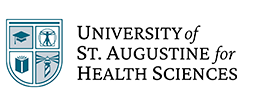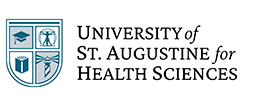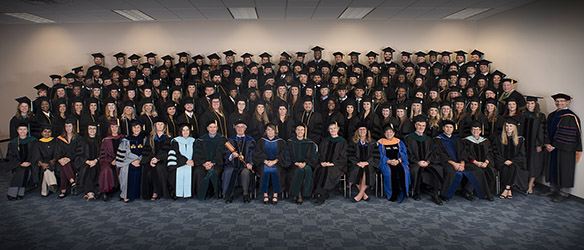
As the U.S. population ages, the demand for practitioners in health professions like occupational therapy (OT) will likely grow¹ The Bureau of Labor Statistics (BLS) predicts that between 2022 and 2032, an average of 16,100 occupational therapist jobs will open each year, mainly due to retirements or career changes.² With such abundant opportunities, there’s never been a better time to enter occupational therapy. One of the first questions you might ask about becoming an OT is the cost of occupational therapy school.
Painting occupational therapy school with a broad brush is challenging, with a range of costs associated with health science education. Depending on the state, the university and the program, occupational therapy school costs may vary.
The salary of your future occupational therapy job is an important factor. Salaries vary depending on your degree level, and it’s interesting to note the differences between an occupational therapy vs. physical therapy salary. If you’re interested in pursuing a career in occupational therapy, consider your earning potential to balance the cost of occupational therapy school.
Tuition for Occupational Therapy Education at the University Of St. Augustine for Health Sciences (USAHS)
Let’s review the average cost of occupational therapy school programs at USAHS.
How much does occupational therapy school cost at USAHS? Expenses depend on which campus you attend, and they fluctuate depending on which pathway you choose to become an occupational therapist: Residential, Hybrid Immersion or Flex. We’ll look at the estimated cost of occupational therapy school for each USAHS pathway.
MASTER OF OCCUPATIONAL THERAPY (MOT)
For those passionate about helping people achieve optimal functioning, the Master of Occupational Therapy (MOT) program at USAHS is an obvious choice—most occupational therapists need a master’s degree to enter the workforce.3 The master’s degree is often the fastest way to practice as an occupational therapist; you will learn how to develop treatment plans and make equipment recommendations in the classroom, clinic and at home.
An occupational therapy student can complete USAHS’ MOT program in as little as two years.* The time it takes depends on which format you choose: Residential (six trimesters; two years), Hybrid Immersion (six trimesters; two years) or Flex (nine trimesters; three years).*
Total occupational therapy school costs for the MOT program—including tuition, school fees, books and associated school expenses—are estimated by campus:
| Residential MOT | Hybrid Immersion MOT | Flex MOT | |
|---|---|---|---|
| San Marcos, California | $104,065 | $106,356 | $95,106 |
| St. Augustine, Florida | $96,257 | $98,392 | $92,904 |
| Miami, Florida | $96,257 | $96,257 | $92,904 |
| Austin, Texas | $96,257 | N/A | $92,904 |
| Dallas, Texas | N/A | $96,257 | N/A |
DOCTOR OF OCCUPATIONAL THERAPY (OTD)
You may advance your knowledge by completing two additional trimesters as part of the Doctor of Occupational Therapy (OTD) program at USAHS. In class, you’ll explore the arts of leadership, policymaking and advocacy in the public health sector. You will also complete a capstone project and conduct original research on an OT topic of your interest.
A 117-credit-hour program, the OTD is designed to be completed between 2.7 years and 3.7 years, depending on which pathway you choose.* Following are the estimated OT school costs associated with the USAHS OTD program:
- Estimated tuition, fees and books for the Residential OTD program equates to $118,593 and is the same on all USAHS campuses. This format typically takes 2.7 years, or 8 trimesters, to complete.*
- A 3.7-year, 11-trimester Flex OTD option is also available on the Dallas, Texas campus; the estimated tuition, fees and books are $116,390.
POST-PROFESSIONAL DOCTOR OF OCCUPATIONAL THERAPY (PPOTD)
USAHS’ Post-Professional Doctor of Occupational Therapy (PPOTD) program differs from the University’s entry-level programs: It is designed for current practitioners or ready-to-practice occupational therapists looking to advance their studies and credentials in occupational therapy.
Overall, the program you pursue (and the average cost of occupational therapy school) depends on the degree you currently hold:
- Bachelor’s Level Students –If you enter the PPOTD with a bachelor’s degree, the program requires 60 credit hours and can be completed in two to four years.** Tuition and fees are estimated at $39,724.
- Master’s Level Students –With a master’s degree, students can complete the PPOTD program in 1 to 2.3 years.** Master’s level students complete a 35-credit-hour program that costs $29,348.


Additional Occupational Therapy School Costs
However, answering the question “How much does it cost to become an occupational therapist?” with tuition amounts only gives you an idea. For a more complete cost of attendance, include expenses beyond books and courses in your calculations.
Other typical expenses students should consider when calculating the cost of occupational therapy school include:
- Housing and Food – Rent and food costs vary significantly based on where you live.
- Transportation – Whether you drive or take the bus, there are costs associated with making your way to campus.
- Additional personal expenses – These fees include entertainment, health insurance, unforeseen situations and more.
- Repeating academic courses – Hopefully, you won’t have to repeat a course. But if you do, you’ll have to pay for the credit hours again.
How to Reduce Occupational Therapy School Costs
How much does it cost to become an occupational therapist? It depends on your lifestyle. There are dozens of ways to keep the cost of occupational therapy school down, including:
- Cooking your own food
- Living with roommates
- Furnishing your living space with secondhand items
- Using the resources and space at the library
- Taking public transit
- Studying diligently (to avoid retaking courses)
Beyond these budgeting tips, a few additional ways to lower the average cost of occupational therapy school is to apply for:
- Financial aid – These can be merit- or need-based
- Scholarships or grants– These can be granted by an organization or university
- Part-time or full-time work – This can include working as a nursing assistant, rehabilitation aide, graduate assistant or in another related role
USAHS OT Scholarship Opportunities
USAHS aims to develop practice-ready health sciences practitioners. The University provides scholarship opportunities for OT students. Even if you’ve already started an OT program application, you can apply for scholarships or financial aid to help reduce the cost of OT school. Learn more about our current scholarship opportunities.
*Time to completion may vary by student, depending on individual progress, credits transferred and other factors.
**Time to completion may vary by student, depending on individual progress, credits transferred and other factors. Please note the bachelor’s-level entry program typically takes four years and the master’s-level entry program typically takes two years and four months to complete based off the most recent two-year graduate data (2020–2021 and 2021–2022).
Regardless of how you fund your occupational therapy journey, you’re sure to learn a wealth of new skills and connect with a diverse, passionate student body. For more information on our programs or any other questions such as “where do occupational therapists work”, feel free to get in touch.
Master of Occupational Therapy – Dallas Campus
The entry-level occupational therapy master’s degree program at the Dallas, Texas, campus has applied for accreditation and has been granted Candidacy Status by the Accreditation Council for Occupational Therapy Education (ACOTE) of the American Occupational Therapy Association (AOTA), located at 7501 Wisconsin Avenue, Suite 510E, Bethesda, MD 20814-6519. ACOTE’s telephone number c/o AOTA is (301) 652-6611 and its web address is www.acoteonline.org. The program must have a preaccreditation review, complete an on-site evaluation and be granted Accreditation Status before its graduates will be eligible to sit for the national certification examination for the occupational therapist administered by the National Board for Certification in Occupational Therapy (NBCOT). After successful completion of this exam, the individual will be an Occupational Therapist, Registered (OTR). In addition, all states require licensure in order to practice; however, state licenses are usually based on the results of the NBCOT Certification Examination. Note that a felony conviction may affect a graduate’s ability to sit for the NBCOT certification examination or attain state licensure.
Students must complete 24 weeks of Level II fieldwork within 24 months following completion of the didactic portion of the program.
For more information about the occupational therapy accreditation process, contact the Accreditation Council for Occupational Therapy Education (ACOTE), 7501 Wisconsin Avenue, Suite 510E, Bethesda, MD 20814-6519, 301-652-6611 or visit www.acoteonline.org.
Sources:
- Jonathan Vespa, “The U.S. Joins Other Countries With Large Aging Populations,” United States Census Bureau, October 8, 2019, https://www.census.gov/library/stories/2018/03/graying-america.html.
- U.S. Bureau of Labor Statistics, “Occupational Therapists: Summary,” BLS, April 17, 2024, https://www.bls.gov/ooh/healthcare/occupational-therapists.htm.
- U.S. Bureau of Labor Statistics, “Occupational Therapists: How to Become an Occupational Therapist,” BLS, May 14, 2024, https://www.bls.gov/ooh/healthcare/occupational-therapists.htm#tab-4






